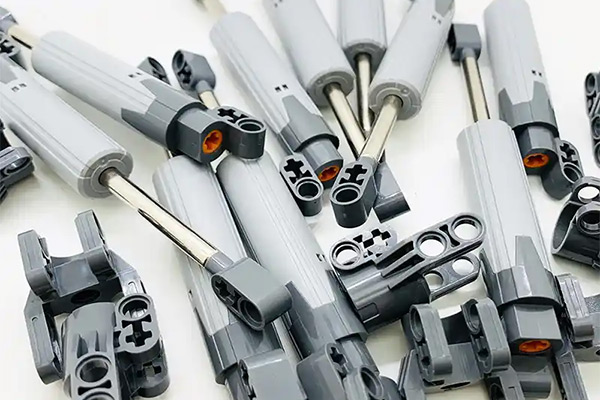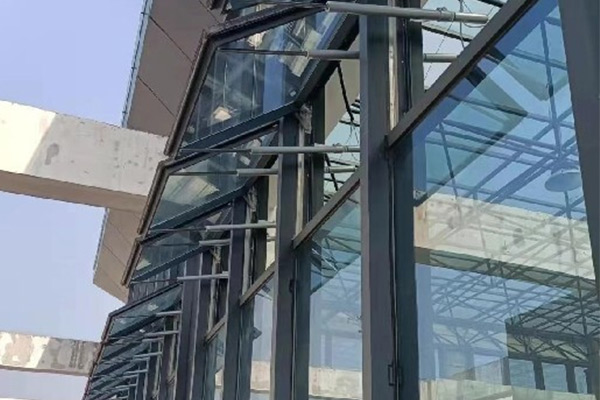A Win-Win in Efficiency and Cost: How Electric Linear Actuators Surpass Traditional Solutions
In the fields of industrial automation and mechanical design, linear motion is an indispensable element. For a long time, hydraulic and pneumatic systems have dominated due to their powerful force output. However, with technological advancements and increasing demands for efficiency and cost control, electric linear actuators are rising at an unprecedented pace, gradually becoming a superior alternative. They not only outperform traditional systems but also offer a "win-win" in terms of total lifecycle cost.
The Efficiency Contest: From "High Consumption" to "On-Demand Power"
Traditional hydraulic and pneumatic systems have inherent disadvantages in energy utilization, which directly affects overall operational efficiency.
● Hydraulic System Energy Loss: A hydraulic system requires the hydraulic pump to run continuously to maintain system pressure. Even when the actuator is stationary or under a light load, the pump still consumes a significant amount of electricity. Furthermore, friction in the pipelines and heat generated by the fluid also cause substantial energy loss. This "constant consumption" model leads to low energy utilization, especially in intermittent or light-load applications.
● The "Leakage" Problem of Pneumatic Systems: Pneumatic systems also require an air compressor to continuously compress air to maintain the supply. The energy consumption of the compressor itself is high, and minute leaks in pipes, joints, and seals add a huge amount of hidden energy waste. According to statistics, the energy loss from leaks in many pneumatic systems can be as high as 30%.
In contrast, the efficiency advantage of electric linear actuators is clear. They consume electricity only when motion is required and can precisely adjust power output according to the load, achieving "on-demand power supply." Their internal high-efficiency motors and precision drive mechanisms (such as ball screws or lead screws) ensure that electrical energy is converted into mechanical energy with maximum efficiency. This highly efficient energy utilization method not only reduces operating costs but also aligns with the modern industrial trend of energy conservation and emission reduction.
The Cost Game: From "Hidden" to "Controllable"
Beyond the obvious operational energy consumption, electric linear actuators also demonstrate an overwhelming advantage in Total Cost of Ownership (TCO).
Initial Investment: Although the unit price of an electric linear actuator may be slightly higher than a hydraulic or pneumatic cylinder of the same specifications, this is only the tip of the iceberg. A hydraulic system requires an expensive pump station, reservoir, filters, and complex piping; a pneumatic system needs an air compressor, storage tank, dryer, and extensive piping. The acquisition and installation costs of this auxiliary equipment are often several times that of an electric actuator.
● Maintenance Costs: Hydraulic and pneumatic systems are notoriously cumbersome and expensive to maintain. Hydraulic fluid needs to be replaced and disposed of regularly, pipes and seals are prone to aging and leaking, and piston rods require protection from dust and lubrication. Electric actuators, on the other hand, typically feature a maintenance-free or low-maintenance design, requiring only periodic checks and minimal lubrication, which significantly reduces labor and material costs.
● Installation and Commissioning Costs: Electric linear actuators are simple to install, requiring only a power cable and control signal line, eliminating the need for complex fluid piping. This greatly shortens installation time and labor costs. Their motion parameters (e.g., speed, position, acceleration) can be easily adjusted via software, simplifying the commissioning process.
● The Performance "Bonus": Value Beyond Traditional Solutions
In addition to efficiency and cost, the flexibility and controllability of electric linear actuators in performance are beyond what traditional solutions can offer.
● High Precision and Programmability: Electric actuators can achieve micron-level positioning and repeatable accuracy, which is crucial in fields such as precision assembly, medical equipment, and semiconductor manufacturing. Their motion curves can be programmed through software to achieve complex acceleration/deceleration and multi-speed control, far surpassing the simple "on-off" or single-speed control of hydraulic and pneumatic systems.
● Clean and Environmentally Friendly: Electric actuators have no risk of leakage, eliminating concerns about oil contamination and odors. This makes them particularly suitable for food, pharmaceutical, and cleanroom environments. It not only guarantees product quality but also improves the working environment.
● Smart Connectivity: Modern electric actuators can be easily integrated into Industrial Internet of Things (IIoT) systems, enabling remote monitoring, fault diagnosis, and predictive maintenance, laying the foundation for building smart factories.
Conclusion
In the context of modern industry's pursuit of efficiency, intelligence, and sustainable development, the electric linear actuator is no longer just a substitute, but a superior solution. It significantly improves energy efficiency through an "on-demand power supply" mode and dramatically reduces total lifecycle costs by simplifying system architecture and lowering maintenance requirements. From initial investment to long-term maintenance, and from energy consumption to environmental friendliness, the electric linear actuator's unique advantages provide businesses with a tangible "win-win in efficiency and cost," leading the way into a new era of linear motion control.
-

A Win-Win in Efficiency and Cost: How Electric Linear Actuators Surpass Traditional Solutions
-

A Win-Win in Efficiency and Cost: How Electric Linear Actuators Surpass Traditional Solutions
-

A Win-Win in Efficiency and Cost: How Electric Linear Actuators Surpass Traditional Solutions
-

A Win-Win in Efficiency and Cost: How Electric Linear Actuators Surpass Traditional Solutions

